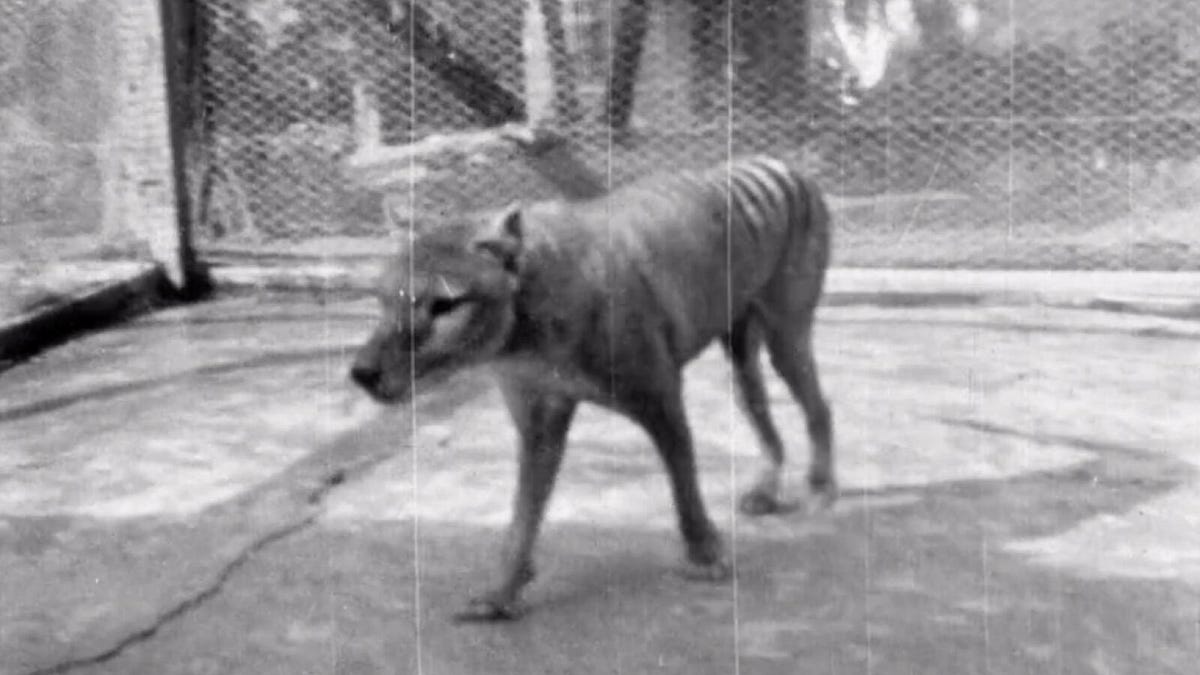Archivists restore last known footage of Tasmanian tiger
The National Film and Sound Archive of Australia releases the 21-second clip, from 1935, of Benjamin, the thylacine.

A still of Benjamin in the clip from the NFSA.
Australian archivists have uncovered the last known surviving footage of the now-extinct Tasmanian tiger. The 21-second clip from a 1935 travelogue called Tasmania the Wonderland has been digitized in 4K, and joins just three minutes of previously recorded footage of the predator. The other recordings were from the Beaumaris Zoo in Hobart and the London Zoo, where the large carnivorous marsupials called thylacines were held in captivity.
In the black and white clip, Benjamin, a male Tasmanian tiger, paces in his enclosure, as a zookeeper and an associate rattle the cage walls in an attempt to elicit a reaction. Though it's unclear who the narrator is, researchers at the National Film and Sound Archive of Australia thinks Tasmania the Wonderland was filmed by Sidney Cook, a Brisbane-based filmmaker and exhibitor, according to a Tuesday press release.
We have released 21-second newsreel clip featuring the last known images of the extinct Thylacine, filmed in 1935, has been digitised in 4K and released.
— NFSA -National Film and Sound Archive of Australia (@NFSAonline) May 19, 2020
Be sure to check out the footage of this beautiful marsupial. #NFSAOpenOnline #TasmanianTigerhttps://t.co/s3JSAnmFck pic.twitter.com/FSRYXCTTMy
"The Tasmanian tiger, easily distinguished by his striped, unjointed tail, is also a dangerous opponent," the narrator says in the clip. "Though like the devil, he is now very rare, being forced out of its natural habitat by the march of civilization. This is the only one in captivity in the world."
Thylacines were also held in zoos in Australia; Antwerp, Belgium; Berlin; and Washington, DC, and New York.
"We remain optimistic that further footage may well surface in other collections," the NFSA said in the release.
In recent years, researchers have been able to sequence the genetic code of the thylacine. New gene-editing technologies, such as CRISPR, may enable (in some distant future) the ability to resurrect the species.

